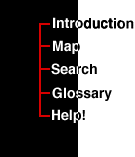

|
 |
And if we were to put Quantum Mechanics and Relativity together ?So, general relativity tells us that space and time may be curved, and that curvature causes what we see as gravity. And quantum mechanics tells us, among other things, that something may exist in an indefinite state, and that these uncertainties become very important when we try to precisely measure very small objects.What then are space and time like on a very very tiny scale? Nobody knows for sure, but it seems fairly certain that a theory describing the nature of space-time on a small scale must have some of the important aspects of quantum mechanics. It might be that the exact shape of space and time is rather indefinite on some small scale. Just like we sometimes have to think of an electron as a cloud-like entity that exists everywhere that an electron particle might exist, perhaps we have to think of space and time on some small scale as existing in a fuzzy state that is a combination of all the possible ways that might be curved. Such a theory is called a theory of quantum gravity. What does this mean? When we talked about the way large masses curve space and time, we used the analogy of a bowling ball sitting on a mattress. In studies of quantum gravity we often continue to use the analogy of a two dimensional universe. In this case the advantage is not just that its easier to envision, but also its easier to perform some of the calculations. We can still learn useful things, though.
Lets suppose we want to look very closely at the small scale structure of a
two dimensional universe. From far away the universe may look pretty flat,
like the surface of a mattress. Possibly there are dimples here and there
where large masses are. Now suppose we can zoom in and look very closely at
the surface. At this level the effects of quantum mechanics should be very
important. The surface does not seem as crisp and well defined anymore,
instead, it is a blur of a surface, a combination or superposition
of all possible surfaces. Every way that one can imagine to distort a surface
is represented in this blur. There is an almost infinite number of them. Some
are wild jungles of undulations with
tongues of the universe's `fabric' stretched and twisted far from what would
be a smooth surface. Perhaps there are even some with loops of the surface
Why do we know so little about quantum gravity? It is because of the
incredibly small size of the fluctuations. It is expected that they are
about
This is far too small to see with any microscope. In fact no one has come up with any type of experiment to test the nature of space on such a small scale So how can we study such a universe? One answer is by using computer simulations. |
|
|